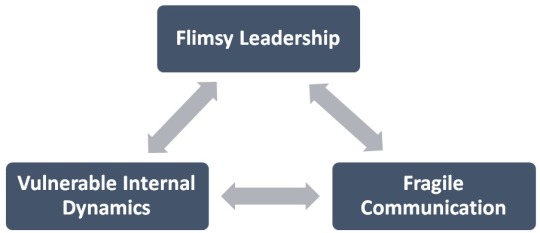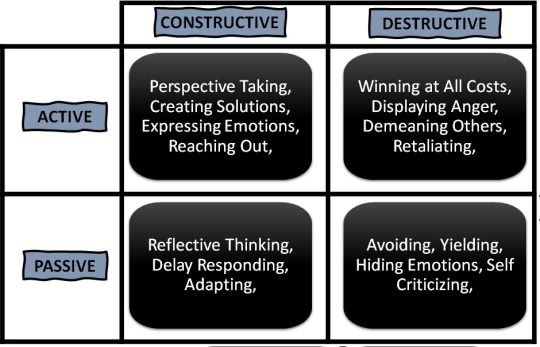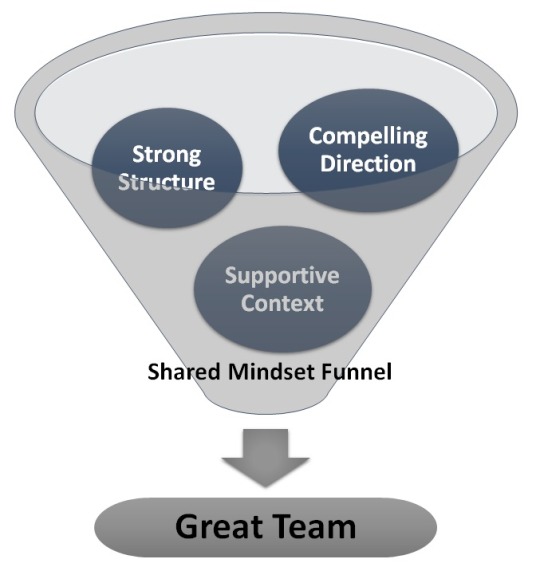#he is the brains of the leadership core and ive always said it
Explore tagged Tumblr posts
Text




look at these chucklefucks
#panthers lb#the lady doth protests too much#(correct. its not his fault guys cant hold onto their sticks nowadays)#she is INCENSED#swaggy and kuli immediately standing up when ekky joins so he can choice of the bench#thats love babey#(its because kuli had 2 seconds left on his penalty and was preparing to leave.#to which refs had to explain the bullshit musical chairs they have to play with this specific scenario)#you can tell no one understood except ekky who was sitting down and not even paying attention unlike swaggy and kuli#and you can tell at what moment ekky had to reexplain it to swaggy who is so lost and confused#hockey smarts#he may be dumb but hes incredibly hockey smart#i love how its always ekky who has to explain really rare specific hockey scenarios#he is the brains of the leadership core and ive always said it#happy 700th game bud
31 notes
·
View notes
Text
Do you know what’s fun?
Picking the blog of someone you don’t like, and seeing how far you can twist things to make it fit the BITE model -criteria to identify a cult. GREAT fun. All you need is a bit of creativity and a total disregard for accuracy. Don’t believe me? Let’s have a try and see how we do! The Bite model can be found here, with many thanks to the Fool for bringing it to my attention.
I. Behavior control:
6. Manipulation and deprivation of sleep.
The Fool lives in Australia and most of his readers are in a different time zone. This means that every time he starts publishing numerous posts about the latest drama, his followers are likely to get absorbed in it, depriving themselves of sleep and becoming more susceptible to his interpretation of things.
9. Major time spent with group indoctrination and rituals and/or self indoctrination including the Internet.
Each time the Fool decides on a new “sin”/aberrant behavior that the “enemy” is guilty of, he will publish many posts repeating the same assertion. Frequent repetition of the core message is a well known indoctrination technique. Many of the Fool’s followers are likely spending an inordinate amount of time on his blog, judging by the speed and frequency that “likes” from the same people appear.
10. Permission required for major decisions.
The Fool often receives and publishes asks, asking him for permission to create a blog similar to his, asking if it’s ok to follow or interact with Simon Alkenmayer, whether they or their friends are safe etc.
11. Thoughts, feelings, and activities (of self and others) reported to superiors.
Readers inform the Fool of what is happening on Simon and Kristina’s blog, report (often mistakenly, rarely, if ever, corrected) what Simon has said or done, both on tumblr and on other social media, such as Twitter. They also contact the Fool to report on their own thoughts and reactions to Simon.
12. Rewards and punishments used to modify behaviors, both positive and negative.
Readers who agree with the Fool and mirror his opinions are rewarded with sympathy (for their negative experience) and by having their intellect and critical thinking skills praised. Anyone who disagrees is deemed to be naive, immature, indoctrinated by Simon, incapable of logic etc. Indeed, the whole continued existence of the Fool’s blog is arguably a form of punishment for Simon “threatening him” with legal action back when the blog was first created. This communicates to members what kind of retribution they may expect if they cross the leader’s boundaries.
13. Discourage individualism, encourage group-think.
Any reports confirming the Fool’s assertions about Simon are immediately welcomed, believed, and adopted into the canon. Dissenting voices are “sent by Simon”, “haven’t read or understood the Fool’s arguments” or have been “manipulated.” The Fool does not acknowledge that it is possible for an intelligent, reasonable and objective adult to read his arguments and disagree with him.
14. Impose rigid rules and regulations.
Such as not answering asks that are not formatted to his liking, and he “can’t be bothered to read”.
16. Threaten harm to family and friends.
The Fool will publicly assert that he has never threatened anyone. However he has gone out of his way to connect Kristina to Simon, who is portrayed as “the enemy”. Several people, including this Jester, have been warned by friends to be careful of attracting the Fool’s and followers’ ire.
18. Instill dependency and obedience.
Readers expect the Fool to tell them which of Simon’s behaviors are problematic. Anyone who disagrees is likely to be accused of the same. (“If you think this isn’t racist, then you are also racist” etc.)
II. Information control:
1. Deception:
a. Deliberately withhold information.
Such as selective quoting, neglecting to withdraw statements that have been proven wrong, and not acknowledging any outside posts that don’t fit with the narrative.
b. Distort information to make it more acceptable.
Such as selective quoting, ignoring context and applying his own interpretation to things said by the “outsiders”.
c. Systematically lie to the cult members.
For example repeating that Kristina accused him of physically setting a fire on her drive.
2. Minimize or discourage access to non-cult sources of information, including:
a. Internet, TV, radio, books, articles, newspapers, magazines, other media.
Frequent repetition of how “unreadable” Simon’s books are, or how “long and ranting” his posts are can be seen as discouraging his followers from accessing them and forming their own opinion.
b. Critical information.
Any posts sharing positive experiences involving Simon are either ignored or discounted.
d. Keep members busy so they don’t have time to think and investigate.
Every time one of the Fool’s theories on Simon’s misdeeds is disproven, the Fool quickly moves on to a new accusation, keeping his followers from going back and reconsidering his previous posts.
4. Encourage spying on other members
b. Report deviant thoughts, feelings and actions to leadership.
The Fool often receives and publishes third party reports on Simon’s posts and behavior, inside and outside of tumblr. These are not fact-checked, but are welcomed and encouraged.
c. Ensure that individual behavior is monitored by group.
The Fool often receives and publishes third party reports on Simon’s posts and behavior, inside and outside of tumblr. These are not fact-checked, but are welcomed and encouraged.
5. Extensive use of cult-generated information and propaganda, including:
b. Misquoting statements or using them out of context from non-cult sources.
The Fool will often misquote Simon, and those misquotes will go on to be repeated with frequency by him and his followers.
III. Thought control:
1. Require members to internalize the group’s doctrine as truth.
a. Adopting the group's ‘map of reality’ as reality
If you don’t believe the Fool to be right, you are illogical, brainwashed or “reaching.” Frequent use of phrases such as “Obviously,” “We all know” etc reinforces this.
Everyone the Fool interacts with must acknowledge that what he is doing is critique, despite all evidence to the contrary.
b. Instill black and white thinking
Simon is “a bad person.” Everything he does must be seen and interpreted through this lense, which is reinforced frequently. The Fool often writes or publishes that Simon is “a bad person,” “a garbage person”, “an asshole” and similar descriptors.
c. Decide between good vs. evil
The Fool gets to determine what is good and what is evil. Simon is evil, and must be called out at every opportunity. The Fool and his followers are good, so any slurs, lies or offensive statements they make are excused and covered up.
d. Organize people into us vs. them (insiders vs. outsiders)
The Fool’s followers are intelligent, “have brains” and would never endanger anyone. The Fool trusts them to handle things appropriately. Simon’s followers are simple, impressionable, a mob. The Fool does not trust them to report their own experience, and their judgement is compromised by definition.
2. Change person’s name and identity.
The Fool calls Simon “Si”, “Krimon” and “Kristina”. Anonymous visitors to his ask box are encouraged to choose a “code name” to protect them from the evil Simon.
3. Use of loaded language and clichés which constrict knowledge, stop critical thoughts and reduce complexities into platitudinous buzz words.
Using loaded terms such as “misappropriation”, “grooming” to describe Simon’s actions and descriptions such as “critique” for his own writing help the Fool elicit the reaction he wants from his followers.
6. Memories are manipulated and false memories are created.
For example an influx of Anonymous asks that somehow suddenly realised years later that Simon behaved badly towards them, even if they didn’t think that way back then.
8. Rejection of rational analysis, critical thinking, constructive criticism.
The Fool has blocked people for disagreeing with him. He frequently shuts down polite questions and uses sarcasm to avoid answering. Despite not affording Simon the same luxury, the Fool expects his readers to “take his word about what he meant” with a post, even if the messenger is politely explaining how it came across.
9. Forbid critical questions about leader, doctrine, or policy allowed.
For example saying that he will “not publish any asks defending antisemitism. Even if that’s not what you think you are doing.” In effect, if you disagree with the Fool’s interpretation of Simon’s behavior as antisemitic, then you are defending antisemitism. No dissent allowed.
10. Labeling alternative belief systems as illegitimate, evil, or not useful.
No one possibly believes Simon is an actual monster, and if they do, they are unable of critical thought.
11. Instill new “map of reality”.
Commenting on someone’s art, mocking them, calling them names, is “literary critique”. Attempts to answer to accusations are “rants”. Asking someone if the possibility of legal consequences bothers them is “threatening” and “becoming irrationally angry”. And so on...
IV. Emotional control:
1. Manipulate and narrow the range of feelings – some emotions and/or needs are deemed as evil, wrong or selfish.
Simon’s feelings are not even real, according to the Fool. Simon could not possibly be affected by the Fool’s actions. He is not real and has no feelings. Instead, he is only capable of “ranting”, “manipulating” and “doing things for attention”. Any concerns brought to the Fool about how his actions are affecting Simon, are answered with “You need to remember he’s not a real person”.
3. Make the person feel that problems are always their own fault, never the leader’s or the group’s fault.
If Simon or his readers are upset, it’s their fault for looking at the blog. If anyone’s reputation is damaged as a result of claims the Fool makes about them, it’s on them. The Fool is free to make any comments he sees fit, with no consequences.
4. Promote feelings of guilt or unworthiness, such as
b. You are not living up to your potential
Being part of Simon’s group means you are allowing yourself to be manipulated and brainwashed. You can not reach your full potential unless you renounce Simon.
c. Your family is deficient
Your “found family” of gentle readers is deficient.
d. Your past is suspect
Your past experiences are not proof of anything. Bad things may have been happening in Simon’s space, and you may have been part of them.
e. Your affiliations are unwise
You are choosing to affiliate yourself with someone bad. And you are unable to tell he is lying to you.
f. Your thoughts, feelings, actions are irrelevant or selfish
If you share your thoughts, feelings or actions to defend Simon, it doesn’t prove anything, and by defending him you are harming others.
5. Instill fear, such as fear of:
b. The outside world
c. Enemies
The Fool makes sure to repeat often enough that readers might be targeted by Simon and his followers. He curates that expectation and then reinforces it by publishing Anons who agree.
8. Phobia indoctrination: inculcating irrational fears about leaving the group or questioning the leader’s authority.
Not so much fears of leaving the Fool’s group, as much as cultivating fears of leaving/going against Simon’s group. The Fool’s group is presented as a safe haven.
d. Never a legitimate reason to leave; those who leave are weak, undisciplined, unspiritual, worldly, brainwashed by family or counselor, or seduced by money, sex, or rock and roll.
Those who don’t embrace the Fool’s blog and choose to remain with Simon are weak-minded, brainwashed, unable to reason, or bad by association. There can be no legitimate reason to like Simon.
e. Threats of harm to ex-member and family.
No explicit threats are made, but seeing the treatment of Kristina Meister is implicitly threatening.
See? Of course all this is just an exercise -a thought experiment. But it’s about as well-argued as the Fool’s original analysis. (Which is to say, neither deserves to be taken seriously.)
11 notes
·
View notes
Text
BARRIERS TO TEAM OPERATIONS: BEHAVIOURS ASSOCIATED

The collaborative nature of teams means they are subject to pitfalls that individuals working alone do not face. Team members may not always work well together and focusing the efforts of individuals on shared goals presents challenges to completing tasks as efficiently and effectively as possible.
Three Barriers to Building a Team

A) Flimsy Leadership
Everything flows from leadership. And when there is a problem in the team, usually, it’s the leader’s fault. The wise king Solomon said, without a vision, the people perish. There could be several reasons that a team is not working, and most often, it starts with the leader.
i. Is there no vision for the team?
ii. No one in the team knows where they are heading?
iii. Is there favoritism being practiced by the leader?
iv. Is the leader too critical of new ideas or suggestions?
v. Is the leader’s style too imposing on everyone?
It could be various reasons, but usually the problem has its roots with the leader.
B) Fragile Communication
Communication is key to the proper functioning of a team. And poor communication can lead to misunderstandings, resentment, offences within a team. Sometimes it’s because one person’s frankness or direct approach offences another person; and another responds in hurt. While conflict is normal in teams, without resolving them, this poor communication can lead to destructive conflict and cause a team to break down.
C) Vulnerable Team Dynamics
Teams can fail because some people just cannot work with others. For example, if we have two extremely opinionated team members, we will be seeing conflict all day in the team. Also, if we have team members that are ‘yes’ men; we won’t see a lot of participation and open discussion in the team. The thing is that, we must find the right mix of individuals to make a team; not just in terms of personalities, but also in terms of skills and abilities.
While these right individuals may have disagreements in approach and perspective, but that’s the idea behind a team, different individuals bringing different points of view so that synergy within the team can be achieved.
The Secrets of Great Teamwork
Today’s teams are different from the teams of the past: They are far more diverse, dispersed, digital, and dynamic (with frequent changes in membership). But while teams face new hurdles, their success still hinges on a core set of fundamentals for group collaboration.

The basics of team effectiveness were identified by J. Richard Hackman, a pioneer in the field of organizational behavior. He uncovered a ground-breaking insight: What matters most to collaboration is not the personalities, attitudes, or behavioral styles of team members. Instead, what teams need to thrive are certain “enabling conditions.” These conditions—a compelling direction, a strong structure, and a supportive context—continue to be particularly critical to team success. Modern teams are also vulnerable to two corrosive problems— “us versus them” thinking and incomplete information. Overcoming those pitfalls requires a fourth critical condition: a shared mindset.
The Enabling Conditions
A) Compelling direction: . . . . . . . . . The foundation of every great team is a direction that energizes, orients, and engages its members. Teams cannot be inspired if they do not know what they are working toward and don’t have explicit goals. Those goals should be challenging (modest ones do not motivate) but not so difficult that the team becomes dispirited. They also must be consequential: People have to care about achieving a goal, whether because they stand to gain extrinsic rewards, like recognition, pay, and promotions; or intrinsic rewards, such as satisfaction and a sense of meaning. In remote teams, direction is especially crucial because it’s easy for far-flung members from dissimilar backgrounds to hold different views of the group’s purpose.
B) Strong structure: . . . . . . . . .Teams also need the right mix and number of members, optimally designed tasks and processes, and norms that discourage destructive behavior and promote positive dynamics. High-performing teams include members with a balance of skills. Diversity in knowledge, views, and perspectives and demographics can help teams be more creative and avoid groupthink.
Team members from diverse backgrounds often interpret a group’s goals differently. This is one area where remote teams often have an advantage. Cosmopolitan members bring technical knowledge and skills and expertise that apply in many situations, while locals bring country knowledge and insight into an area’s politics, culture, and tastes. Larger teams are more vulnerable to poor communication, fragmentation, and free riding (due to a lack of accountability). With remote teams, people in different locations often handle different components of a task, which raises challenges. Repartitioning the work to give them ownership increases motivation and engagement and improves the quality, quantity, and efficiency of work.
Destructive dynamics can also undermine collaborative efforts. We’ve all seen team members withhold information, pressure people to conform, avoid responsibility, cast blame, and so on. Teams can reduce the potential for dysfunction by establishing clear norms—rules that spell out a small number of things members must always do (such as arrive at meetings on time and give everyone a turn to speak) and a small number they must never do (such as interrupt).
C) Supportive context: . . . . . . . . . . . This includes maintaining a reward system that reinforces good performance, an information system that provides access to the data needed for the work, and an educational system that offers training, and last—but not least—securing the material resources required to do the job, such as funding and technological assistance. Ensuring a supportive context is often difficult for teams that are geographically distributed and digitally dependent, because the resources available to members may vary a lot.
D) Shared mindset:. . . . . . . . . . . Distance and diversity, as well as digital communication and changing membership, make teams especially prone to the problems of “us versus them” thinking and incomplete information. The solution to both is developing a shared mindset among team members—something team leaders can do by fostering a common identity and common understanding. Teams now often perceive themselves not as one cohesive group but as several smaller subgroups. This is a natural human response: Our brains use cognitive shortcuts to make sense of our increasingly complicated world, and one way to deal with the complexity of a remote team is to lump people into categories. But we also are inclined to view our own subgroup—whether it’s our function, our unit, our region, or our culture—more positively than others, and that habit often creates tension and hinders collaboration.

Incomplete information is likewise more prevalent in remote teams. Shared knowledge is the cornerstone of effective collaboration; it gives a group a frame of reference, allows the group to interpret situations and decisions correctly, helps people understand one another better, and greatly increases efficiency. There are many ways team leaders can actively foster a shared identity and shared understanding and break down the barriers to cooperation and information exchange. One powerful approach is to ensure that each subgroup feels valued for its contributions toward the team’s overall goals.
**Sources: The works of J. Richard Hackman
Content Curated By: Dr Shoury Kuttappa.

#emotional intelligence#leadership#Teamwork#remotecollaboration#collaboration#mindset#vision#direction#context#support#structure#virtual teams
0 notes
Text
Duterte coalition shaken by rift, says visiting opposition leader
By: Jun Nucum - INQUIRER.net US Bureau, August 07, 2018
SAN FRANCISCO – A visiting civil society figure said that Philippine President Rodrigo Duterte let himself to be upstaged by the last-minute dramatic change in the leadership of the House of Representatives and was not his usual self when he delivered his 3rd State of the Nation Address (SONA).
Vicky Garchitorena, a stalwart of the Alliance of Women for Action Towards Reform (AWARE) and core leader of the opposition coalition Tindig Pilipinas, observed that President Duterte “was not himself and very subdued, contented with just reading the prompters, did not curse or go off script as he usually does and that the SONA itself was very short, “which was very unusual.”
“We got news that he saw his doctor in Cardinal Santos the day before the SONA. The conjectures are that he might have been apprised of serious health issues,” Garchitorena told INQUIRER.net during her recent visit to the San Francisco Bay Area.
“This may also be the reason why presidential daughter Davao City Mayor Sara Duterte-Carpio took up the cudgels and manipulated the Congress to install former president and incumbent Pampanga Congresswoman Gloria Macapagal-Arroyo (GMA) as Speaker. I also believe GMA has always been the brains behind Duterte on political issues.”
Garchitorena, the former head of Arroyo’s Presidential Management Staff, also sensed a rift in the Duterte coalition because it is widely believed that Duterte wanted Alvarez to stay as Speaker as he was his man.
“GMA is too strong for him. He may not have known about the coup, which Sara participated in or led, together with Ilocos Norte Governor Imee Marcos. Besides, President Duterte’s PDP Laban party seems to be breaking up as well. Former Senate President Aquilino Koko Pimentel III was against the party’s general assembly held recently.
“Also, coalition partner Senator Grace Poe is against GMA. If indeed Duterte is very sick, as he has not been seen frequently, it may be the reason they will try to ram through the Charter Change and federalism,” Garchitorena surmised.
The Liberal Party (LP) may have been kept in the dark during the change in House leadership, but Garchitorena avers that the opposition is gaining ground and many young people are being attracted to LP, Akbayan, and Magdalo parties “as they have always been working for democracy and justice.”
“Their leaders are very charismatic. Senator Leila de Lima has received an international award. Senator Antonio Trillanes IV has been very vocal against Duterte’s billions while Senator Risa Hontiveros has always supported women’s rights. Tindig Pilipinas is also gaining ground. Its hubs are all working overtime to spread their influence in the provinces and among all sectors — professionals, the youth, women, the poor,” Garchitorena claimed.
“We hope the 2019 elections can be a turning point. If Duterte cancels it, that can be their damnation,” she added.
On GMA’s return to a powerful position, Garchitorena assessed that her former boss is very vulnerable and will have a hard time consolidating power dogged as she is by corruption-related controversies like the Hello Garci tape on alleged 2004 presidential election rigging, $329-million National Broadband Network (NBN) deal with China’s ZTE Corp., and her alleged P500,000 gift to all congressmen/women and local officials as bribes in Malacañang, among others.
“Yes, GMA is one of the alleged corrupt officials that just-retired Ombudsman Conchita Carpio-Morales referred to as recycled officials accused of committing corruption. GMA was released as soon as Duterte won.”
Duterte, Garchitorena said, “is one of the worst presidents we have had. Our economy is tanking. Foreign investments are down 90%. The peso is falling in relation to the dollar. TRAIN is dragging down the most vulnerable of our people. Many people are already disgruntled.”
“The eccentricity of Duterte and his propensity for killing are no help. The drug lords are not being held accountable. The corrupt are just reassigned to other government posts.”
Still, Garchitorena is hopeful because the youth are now becoming more discerning of who are trustworthy among those who purport to lead the nation, despite the return to power of politicians associated with plunder.
It will be recalled that President Joseph Estrada was ousted by the so-called EDSA People Power 3 for alleged plunder but is the current Mayor of Manila. GMA, successor of Estrada, was also accused of plunder and for a long tim, under house arrest, is now the new House Speaker. Even the immediate family members of President Ferdinand Marcos, Rep. Imelda, former Sen. Ferdinand Bongbong Marcos Jr. and Governor Imee are riding high, with Marcos himself now buried in the Libingan ng mga Bayani, which is believed to be Duterte’s way of paying off his political debts.
“It is good that the youth understand that there are a lot of problems happening in our country and are speaking out. It is also good for the Fil-Ams here to be aware of what’s happening in their Motherland, even if they are not in the country and are therefore not directly affected day-to-day. We really have to reach out to the younger generation, for them to understand that they should be a part of strengthening democracy and resisting the authoritarian impulses of our leaders,” Garchitorena underscored.
News Source Link: http://usa.inquirer.net/…/duterte-coalition-shaken-rift-say…
#NaDu30Tayo #Du30FakeDrugWar #RagasaNgDu30TRAIN
0 notes